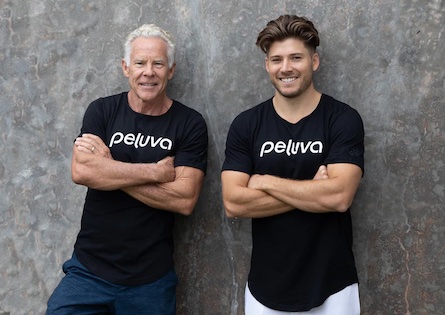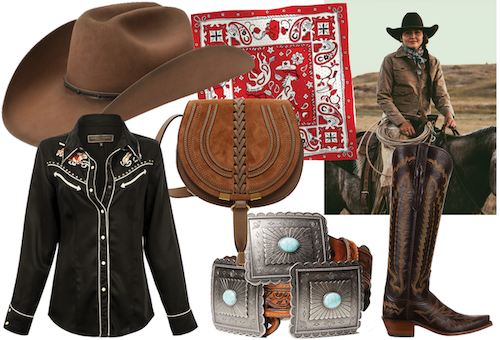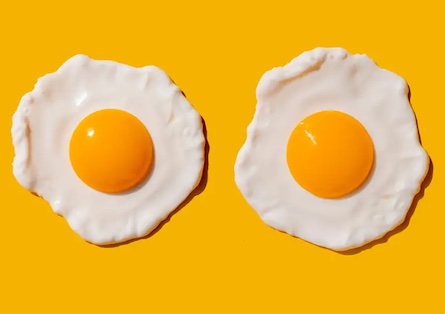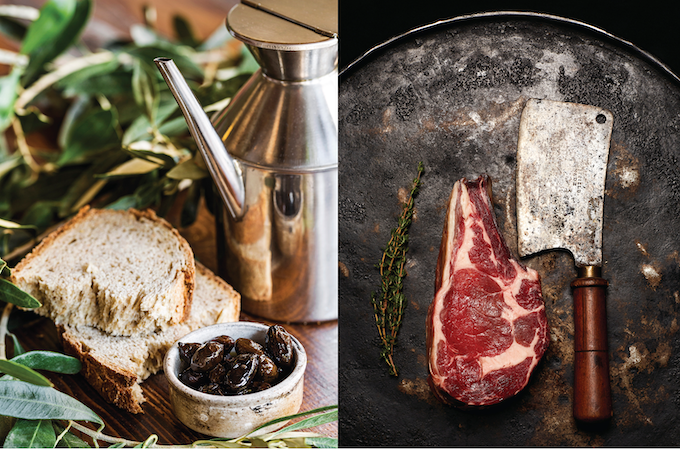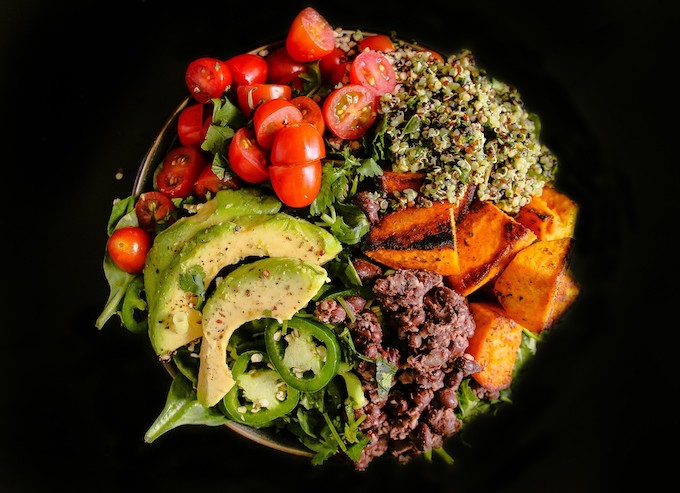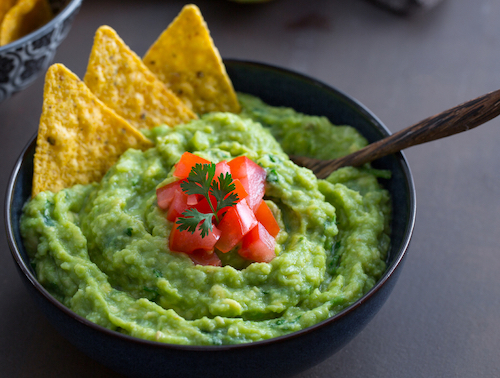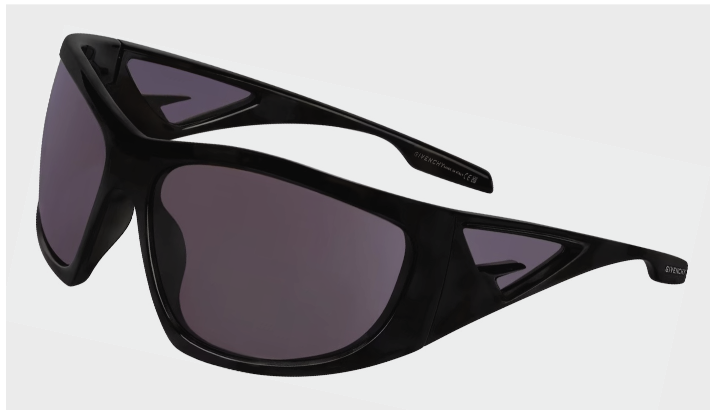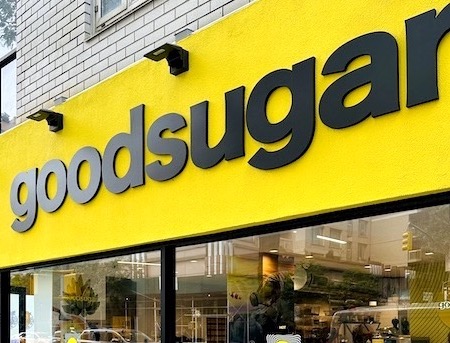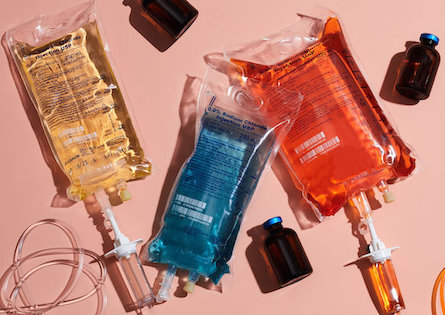Fat free, low carb, high protein… every few years a new diet trend comes along, eliminating one major food group while promoting another, touting the miracle health and weight loss results. What goes around comes around, and the cyclical nature of what to eat and what not to eat can get very confusing. The diet and nutritional trends we feature on STYLE of SPORT are a trickle-down from elite athletes and what they eat for sport performance. Carbohydrates used to be considered the go-to fuel source, but in recent years that has shifted to fat, which as it turns out is great for weight loss too. But the latest trend lets you have it all!
Carbohydrates are the body’s preferred fuel source, generally because that’s what we feed it. The body converts carbs into glucose for fuel. What it doesn’t use, it stores as glycogen. But there is a limited capacity to how much glycogen it can store, 2400 calories in fact, and after that the excess glucose is stored as fat. Carbs are easier to access for fuel than fat, and what the body will turn to first for energy. “Carbo loading” used be the norm for endurance athletes, with bowls of pasta consumed the night before a long race, and sugary gels during the race.
When carbohydrates are not available however, the body will tap into other fuel sources, namely fat. If you think of your metabolism like a fire, carbs are the kindling. But kindling burns fast, as opposed to those slow burning logs underneath which you can compare to fat. As such, many endurance athletes have discovered that fat is actually a better source of energy, and trained their bodies to be fat burners instead of sugar burners. The low-carb, high-fat Keto diet is a popular reflection of that trend. Gone are the bowls of pasta before a race, replaced the body’s own supply of fat, something many of us have handily stored in places we don’t want it.
Training your body to become a fat burner takes work. It means restricting carb intake quite drastically on a Keto diet, on average less than 50 grams a day. The result is ketosis, where the liver produces ketones, a source of energy the body is just as happy to use for fuel. It takes about 4-6 weeks to become “fat-adapted”. Ketones are actually considered a better source of fuel because they are more energy efficient. The more fat you’re able to utilize, the longer you stay in that fat-burning zone, saving glycogen for when you really need it: crushing the last mile of a race or pumping out that last rep at the gym. Yes, those carbs have to go, but delicious healthy fats and protein get to replace them.
But what if we didn’t have to choose between carbs and fats? What if we could have it all and still be fit and lean? Well it turns out we can! I sat down with our contributing nutrition and wellness editor, Sarah Wragge, to talk about a couple of popular new sport nutrition trends, metabolic flexibility and carb cycling, and other ways to have your carbs and eat them too!
STYLE OF SPORT: I first heard about athletes using fat for fuel instead of carbohydrates a few years ago from Mark Sisson, the founder of Primal Kitchen and Mark’s Daily Apple. A former competitive endurance athlete, he has since built a Paleo empire with his line of healthy high fat, low carb food products. I have been eating this way for the last couple of years, following a Paleo diet that is typically low in carbs but rich in fat and protein. I thought in order to train your body to burn fat, that meant no carbs or it doesn’t work. But I recently heard Mark speak about metabolic flexibility and training your body to burn whatever you feed it, carbs or fat, for fuel.
SARAH WRAGGE: Most people are sugar burners, because that’s what they eat in a typical carb loaded diet: cereal for breakfast, a sandwich for lunch, steak and a baked potato for dinner. But then there are more nutrition-conscious or elite level athletes who have trained their bodies to burn fat for fuel. The next level is where people like Mark Sisson live who have become metabolically flexible. It’s where we all would dream to be, and but didn’t know it was possible.
“once you’ve trained your body to burn fat, it becomes more efficient at burning carbohydrates too. It means we can tap into different fuel sources to power different activities.”
SOS: I didn’t know it was possible. I thought you had to pick a lane. I’ve basically eliminated carbs. I don’t eat bread or crackers or even rice cakes anymore, because I don’t want to sabotage my fat burning furnace. I’m not always so disciplined, but that has been my understanding. Carbs have gotten such a bad rap. I was so surprised — and happy — when I heard the guy I consider the guru, Mark Sisson, talk about eating carbs again.
SW: You can, but you have to go really extreme at first and live in the Keto zone which trains your body to burn fat. To get into ketosis doesn’t take long. You can get there quickly using tools like intermittent fasting, but that’s only temporary. It’s not the same as being “fat-adapted” which takes at least 2-4 weeks and where most people mess up.
SOS: According to Sisson it takes 4-6 weeks to become fat-adapted, but once you’ve trained your body to burn fat, it becomes more efficient at burning carbohydrates too. It means we can tap into different fuel sources to power different activities. “Carb cycling” is another new trend I’ve heard about that has made it okay to eat carbs again.
SW: Carb cycling is actually an old weight loss trick with a new name in which you alternate your carb intake on a weekly schedule between low, moderate, and high carb days. It revolves around a person’s training schedule. Like metabolic flexibility, the goal of carb cycling is to teach the body when to burn fat and when to burn sugar, for both sport performance and weight loss.
SOS: It’s the same concept, but metabolic flexibility is about adding carbs back into your diet. Carb cycling is about taking them out. The good news is carbs are back! These are sport performance trends, but there are also weight loss benefits. How are you integrating carbohydrates into your clients’ diets?
SW: What I like to do is combine carb cycling with intuitive eating. I recommend my clients try to eat carbohydrates just once a day, and choose the time based on their activity levels and goals. As soon as you eat carbs your insulin shoots up and you don’t burn fat. What I’m trying to do is optimize the amount of time you’re burning fat every day and carbs stop that. But when you deprive yourself of carbs and are active, 9 times out of 10 it results in a heavy binge session. You’re so depleted and overeat because your glucose stores are so low.
SOS: There is the physiology but also the psychology. For athletes, and people who purely eat for fuel, with no emotional connection to food, they can be more disciplined because it’s about performance. But if someone is constantly depriving themself of something they enjoy — and who doesn’t love carbs?? – they binge once they do give in.
SW: I think people don’t give themselves permission to eat enough. Most people’s bodies are so polluted with dairy, sugar, caffeine, and alcohol that their hunger and satiety cues are shot.
SOS: I think people often eat for other reasons too — they’re bored, procrastinating, stressed. I do that sometimes. If I’m going for a snack a couple hours after I had lunch I have to check myself and ask, ‘Are you really hungry or do you just not feel like sitting down and writing that piece?’ I think it’s hard and you have to train yourself to know your body’s real hunger cues.
“I want your body in the fat burning zone all day. Then at night you get carbs. It’s that comfort food at the end of the day so many people want. Like a nourishing quinoa bowl with kale, chopped sweet potato, avocado. It gives people permission to have carbs and really enjoy that meal.”
SW: There is science and there is real life. It’s important to give people permission to eat the foods they love, but when I say carbs, I mean slow-burning, fiber-rich carbohydrates that won’t spike your blood sugar. I’m talking about foods like sweet potato, quinoa, and Ezekiel bread that’s made from sprouted grains. In general, I’m never going to tell you to have a bowl of pasta, unless it’s a special treat.
SOS: If weight loss is not your primary goal, but athletic performance and metabolic flexibility, what about whole grain pasta, and also oatmeal?
SW: That’s fine. White potatoes are too along those lines. But there will be days when you don’t need any of those carbs, like on a rest day from the gym, or sitting at your computer all day. The problem for a lot of people is their activity level doesn’t match their carb intake. I make my clients buy a heart rate monitor and send me snapshots after a workout. Sometimes I don’t know what they were doing. It’s like they were sitting around and chatting with their friends.
SOS: I do… it’s what I use to see people doing at the gym, on the Stairmaster reading the paper. If you can do both you’re not working hard enough. This does bring up an interesting point though. I remember when the big exercise buzz was getting into the aerobic “fat burning zone”. You didn’t want your heart rate through the roof. It was about training at 70% of your max heart rate. Then your body isn’t relying on carbs and sugar, but tapping into its fat stores.
SW: Yes, when I look at a client’s heart rate monitor that’s what I want to see. I want them training in that fat-burning zone. If weight loss is your goal, I recommend fasting before a workout too, especially first thing in the morning. Most people can do that. You are going to go through your glycogen stores and then start burning fat.
SOS: I pretty much always have a banana before I train in the morning, but I could definitely get away without it.
SW: Your metabolism and activity level are very different from someone coming to me to lose 30 lbs. If they can’t work out on an empty stomach, I say put 2 tablespoons of chia seeds in water with a squeeze of lemon and Himalayan sea salt. It makes a great Gu shot.
SOS: Probably doesn’t taste like one though… yikes!
SW: Or handful blueberries with a tablespoon of nut butter… or a green juice.
SOS: That sounds much more appetizing.
SW: You want to give your body something it can burn through quickly before a workout. Something that won’t spike your insulin levels. Something lower on the GI (Glycemic Index) scale. I know you like that banana, but it has 24 grams of net carbs and is much higher on the scale than say a half cup of blueberries which has 9 grams of net carbs.
SOS: Oh wow… I might have to switch it up!
SW: It’s after the workout that I want my clients having that first meal — something like eggs with avocado, or a high-fiber protein shake. Lunch is their biggest protein meal. And then for dinner… that is when I say to have your complex carbs.
SOS: That seems counterintuitive to me. I would think you’d want your carbs earlier in the day, when you’ll burn them off, as opposed to at night when you’re resting.
SW: No… you’re going shut fat burning off if you eat carbs in the middle of the day. I want your body in the fat burning zone all day. Then at night you get carbs. It’s that comfort food at the end of the day so many people want. Like a nourishing quinoa bowl with kale, chopped sweet potato, avocado. It gives people permission to have carbs and really enjoy that meal. Plus carbs are rich in magnesium which is great for sleep and relaxation too. Also, a lot of people may want a glass of wine with dinner. That’s an insulin spiker and is going to shut down fat burning. I’d rather you shut it down all at once.
“We all have different weight loss and performance goals, but ultimately if you are constantly feeding yourself, i.e. grazing, your body is never burning fat.”
SOS: So interesting… it’s a completely different way of thinking and definitely not what we were taught to believe. It makes total sense though. I feel like we’re turning all these traditional notions upside down. Another trend we’ve spoken about along these lines is “grazing”.
SW: Grazing is an old school idea. It shuts down fat burning too. I would rather you feast and famine 3 times a day.
SOS: For so long we’ve been hearing to have multiple small meals throughout the day instead a traditional big breakfast, lunch, and dinner. All these trends are so cyclical and seem contradictory. It gets very confusing for people. It’s confusing for me.
SW: We all have different weight loss and performance goals, but if you are constantly feeding yourself, i.e. grazing, your body is never burning fat. It’s simple science. Insulin is a hormone that is released when we eat food, no matter what it is. When insulin is present in the blood stream our body does not burn fat. And if you have too much insulin that gets stored as fat.
SOS: I’m a grazer, but I feel like I burn off those small meals throughout the day — and really I’m talking about a smoothie, piece of chicken, handful of nuts, a protein bar. Nothing that’s more than 200 calories a pop.
SW: You’re a different example, but if you were to feast and famine throughout the day, you’d drive your insulin levels to zero, and your body would have a chance to get into ketosis during the day. Before I got pregnant, I got super lean doing feast and famine. I was still eating a big lunch, decent dinner, and good breakfast. I fought through that 4pm urge for a snack and I got over it, but there was a week where it was rough. I got headaches. I was starving. But I pushed through it. That’s training your body’s metabolism. It’s like weight training. That last rep is so hard, but you have to push through to get to the next level.
SOS: Or like marathon training. You have to make that jump from 12 to 14 miles. That last 2 miles is brutal at first, but next thing you know you’re doing 16 miles.
SW: Like any sport training, you have to work to achieve your goals. It’s not always easy, but you can have it all! To be metabolically flexible, to have your carbs and eat them too? That’s the reward. That’s the holy grail!
Photos: Ellis Parrinder/Gallery Stock, Julien Capmeil/Gallery Stock; Layers of Happiness
~~~~~~~~~~~~~~~~~~~~~~~~~~~~~~~~
Be sure to check out sarahwragge.com! It’s another collaboration with STYLE of SPORT. I was thrilled to serve as creative consultant, both on the visual and editorial side, to help revamp and rebrand Sarah Wragge Wellness. Let us know how we can help with your next project!
Email: info@styleofsport.com


